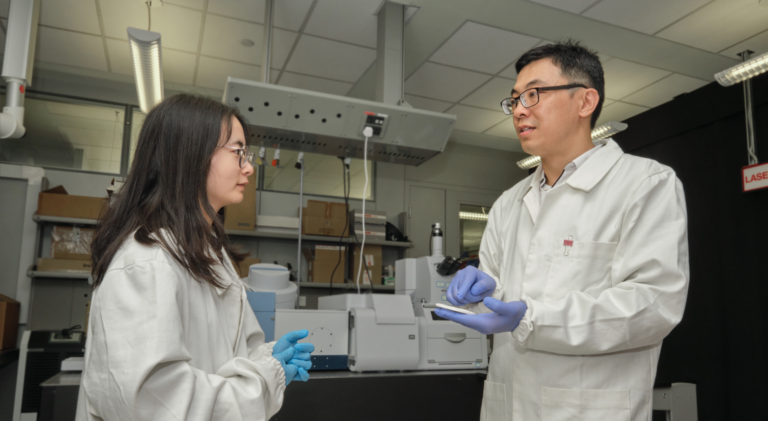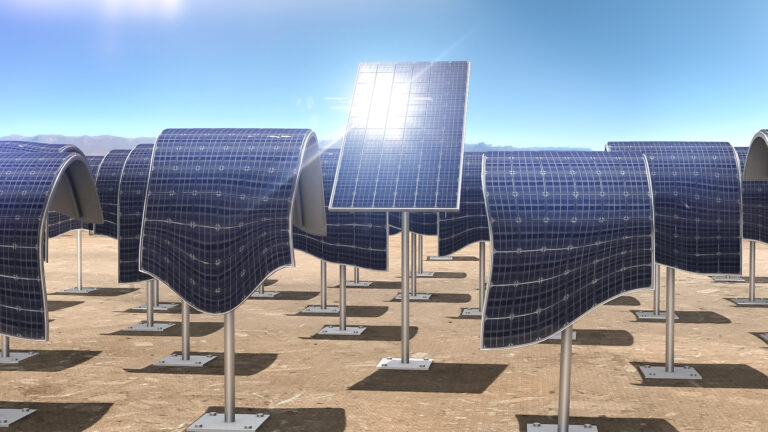Material Science and Engineering
An origami ‘slinky’ that harvests incidental energy
Lightweight and low-cost device uses friction inside paper-based coils to transform mechanical motion into electricity.


A paper-based slinky structure can be easily stretched and recombined to turn mechanical motions into electric output signals.
Reproduced with permission from reference 1© 2015 American Chemical Society.
Using the ancient Japanese technique of origami to fold paper sheets and Teflon films into three-dimensional spring structures, researchers from KAUST have developed an electrical ‘nanogenerator’ that can power tiny sensors and software networks using mechanical energy harvested from the environment1.
Mechanical energy harvesters are devices that can capture trace amounts of energy from normal occurrences — vibrations from passing trains, or the footsteps of pedestrians for instance — and convert them into usable electricity. One of the most effective ways to do this is via a phenomenon known as triboelectricity. This effect, familiar to anyone zapped by built-up static electricity, occurs when two materials of different polarities make contact intermittently. The repeated rubbing causes electrons to jump from one surface to another, creating an electric potential proportional to external force.
Researchers have exploited this behavior to produce triboelectric nanogenerators (TENGs) that slide or tap together for small-scale energy production. Moving electrons between adjacent surfaces in TENGs, however, is generally performed with ‘triggers’ that move in one direction only — a limitation that prevents capture of the full range of potential energy.
Jr-Hau He from the Division of Computer, Electrical and Mathematical Science and Engineering at KAUST along with international collaborators set out to solve this puzzle using shape-shifting, paper-based origami structures. First, the team folded regular printer paper into four ‘L’-shaped pieces, and then interconnected them into a spring-like subunit. After gluing aluminum foil and Teflon sheets to the paper substrate, they linked the subunits together into an integrated device resembling a Slinky toy.
When an external force compresses the Slinky-TENG, the Teflon film contacts the paper and steals electrons from its surface. Releasing the force expands the slinky and separates the two surfaces, causing the accumulated electrons to flow through the aluminum foil to a ground circuit. Repeating the compression generates another potential difference that draws electrons from the ground to the aluminum foil — a periodic cycle that harvests energy through multiple stretching, lifting, and twisting motions.
The researchers’ device produced micro-Watts of power per square meter — enough to power four commercial LED bulbs — and operated for more than 10,000 cycles without deterioration. Moreover, the Slinky-TENG also acts as a self-powered pressure sensor that differentiates the weight of different coins by the voltages they produced.
“Using paper, one of the most inexpensive, and widely-accessible materials, to generate electricity can make the triboelectric nanogenerator useful and even disposable,” says He. “Origami techniques can extend the applications of nanogenerators remarkably.”
References
- Yang, P.-K., Lin, Z.-H., Pradel, K. C., Lin, L., Li, X. Wen, X., He, J.-H. & Wang, Z L. Paper-based origami triboelectric nanogenerators and self-powered pressure sensors. ACS Nano 9, 901–907 (2015).| article
You might also like

Electrical Engineering
A shade closer to more efficient organic photovoltaics

Material Science and Engineering
A tandem approach for better solar cells

Material Science and Engineering
High-temperature electrical memories for brain-inspired computation

Environmental Science and Engineering
A green polymer film offers climate-friendly cooling

Material Science and Engineering
Efficient coupling adds an extra level to photovoltaics

Electrical Engineering
Best thermal stability and efficiency in organic solar cells

Electrical Engineering
Seeking stability to support sustainable outdoor solar cells

Chemical Engineering



